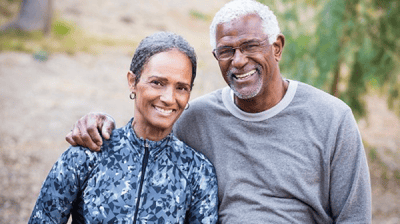 It has long been established that regular exercise is essential to good health. In recent years, there has been a focus on understanding which exercises are best at various life stages. What works well at 20, for example, may not be appropriate at 50. Our bodies change as we age; so too should our workout habits. How much exercise you need, and what types you should engage in, can vary widely at different times in your life. Particular attention should be paid to the type and duration of exercise as you grow older. CNET explains:
It has long been established that regular exercise is essential to good health. In recent years, there has been a focus on understanding which exercises are best at various life stages. What works well at 20, for example, may not be appropriate at 50. Our bodies change as we age; so too should our workout habits. How much exercise you need, and what types you should engage in, can vary widely at different times in your life. Particular attention should be paid to the type and duration of exercise as you grow older. CNET explains:
Physical activity is safe for older adults when done correctly and is necessary for a healthy life. The benefits of exercise among the aging population are strongly supported by the CDC, physical therapists and personal trainers across the globe.
Kevin Robinson, DSc, a physical therapist and professor of orthopedics and kinesiology, shared some general guidelines for safe exercising for older adults:
1) Focus on minimal-impact activities, like water exercise, recumbent stationary bikes and ellipticals.
2) Join SilverSneakers programs often offered at local health clubs. These are usually covered by insurance and are designed specifically for older adults. One benefit of these programs is that you can also make friends, which will help you attend consistently.
3) Focus on certain muscle groups like gluteals (butt), quadriceps (thighs), biceps and abdominals, and know your limits.
4 Make stretching and balancing exercises part of your regular exercise program.
Here are some examples of what that exercise routine can look like for older adults.
1. Moderate cardio
The CDC defines moderate aerobic activity, also known as cardio, as a 5 or 6 on a scale of one (sitting still) to 10 (working hard). Some activities that are light cardio for one person may be moderate cardio for another.
Walking is a common form of moderate cardio, especially popular with older adults. … Other forms of moderate cardio include hiking, running errands or doing certain chores (like raking leaves), some types of yoga, bike riding and using an elliptical.
2. Light strength exercises
Erin Stimac, personal trainer and group exercise instructor, says functional movements are the foundation for maintaining independence, reducing the risk of injury and enhancing your overall quality of life. Erin recommends incorporating strength exercises that cover essential functional movements. …
Some specific CDC-recommended light strength exercises that can incorporate functional movements include weight lifting, using resistance bands, working in a garden, bodyweight exercises like pull-ups or push-ups, and various yoga postures.
3. Exercises to help your balance
Good balance reduces the risk of falls. "To improve balance, you need to perform balance activities for short periods of time throughout the day, as opposed to 10 to 15 minutes once a day," said Robinson.
Yoga is also a common form of exercise known to improve balance, according to Johns Hopkins Medicine.
You can read the full article here.
There is no one size fits all approach to exercise, regardless of age. Trying out different physical activities to discover what you enjoy and experience the best results with is always a good idea. You are unlikely to stick with anything otherwise. And of course, it is important to speak to a medical professional before beginning any new exercise routine.